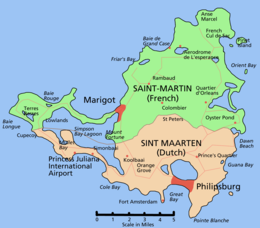Saint Martin/ Sint Maarten is an island divided between France and the Kingdom of the Netherlands. The population size is roughly around 78,000. The climate is described as a tropical monsoon climate and is dry and rainy around the year. The culture is divided between the Dutch and the French and in its history, people living there were made to choose one or the other. A lot has changed since then though and it's not fractioned.
1. Saint Martin has a international airport on the Dutch side and a regional airport on the French side. If flying directly from the United States, there are airlines like American Airlines, United Airlines, and Delta Airlines that can take you. From Europe, there is Air France, Corsairfly, KLM, and Tui Netherlands airlines. Airplane tickets can be in the thousands.
If you prefer a cruise, Carnival is a good choice. Depending on where you are sailing from, the price can range from the three hundreds to thousands.
In order to be allowed entry, you need a valid passport for the duration of your stay and visa if your passport was issued from a country that required a visa.
The currency used there: Dollars from United States are accepted across the island but the Euro and the Netherlands Florin are used as well.
2. There are a couple of resorts there you can stay at. Simpson Bay Resort and Marina is an example which has a lot of good reviews.
3. Where to go: Orient Bay and Maho Bay are popular beaches on the island. Loterie Farm is somewhere you can hike and go to a cabana and zipline. Front Street, Boardwalk, and Old Street are where you can shop and go to different stores. Sky Explorer Flying Dutchman Schooner Ride is a ride that visits the rainforests.
4. Things to do: You can snorkel off of the coral in Prickly Pear. There are also sailing and yacht tours available. There is a cruise that goes around the island and one that goes back and forth between Anguilla and Sint Maarten. There is also a ATV seeing tour.




